LUXOR, the Upper Egyptian city
Luxor, one of the most important cities in ancient Egypt, takes its current name from the Arabic Al `uqsur (palaces). Luxor, the ancient city of the pharaohs on the banks of the Nile River in Upper Egypt, was called “Waset” in ancient Egypt and “Thebes” by the Greeks. The city, located about 500 km south of Egypt’s capital Cairo, awaits you with the most impressive sights of ancient Egypt. Luxor is divided by the Nile River into the east bank (Luxor East Bank) with its colossal Luxor Temple and Karnak Temple and the west bank (Luxor West Bank) with the famous Valley of the Kings, Valley of the Queens, the Colossi of Memnon and Hatshepsut Temple.
With a visit to Luxor, you will find yourself in the largest open air museum in the world. About a third of all ancient monuments are located here. A vacation in Egypt without a visit to Luxor? You would miss the beautiful landscape along the Nile River with its long and impressive history! Already the famous Agatha Christie traveled this landscape. During the visit to some of the ancient sites of Luxor, you will find yourself on a journey back in time from thousands of years to ancient Egypt. At the same time, you dive into today’s modern city life in Luxor, as well as the country life on Luxor West Bank with its fertile fields.
Note: Luxor is the perfect starting point for a tour through Egypt! The popular and very luxury cruises over the Nile River towards Aswan also start from Luxor. Regardless of whether you visit the metropolis of Cairo or Luxor first, both cities combine to transport you back into the time of the pharaohs of Egypt.
The fascinating sights of Luxor
Follow us to the east bank (Luxor East Bank) with:
Karnak Temple
The Karnak Temple Complex, also called Karnak Temple, consists of 3 parts. These are the areas of Amun, Mut, and Month. However, the area of the Amun is probably the most impressive part for every visitor. A sphinx-lined entrance takes you into the Hypostyle Hall, which consists of 134 massive columns. Standing right next to them, you will feel very tiny. It is still unimaginable how the Egyptians built these structures in the time of the pharaohs!
This temple complex was used for worship and built over several generations, even up to the Greco-Roman period. Inside, you can find the white chapel, one of the oldest preserved structures in the complex, the red chapel, built by Queen Hatshepsut, and the alabaster chapel of Thutmose IV. The well-preserved temple of Ramses III is in the courtyard.
In the outside area is the “Holy Lake“. The lake was formed by groundwater and used by the priests for ablutions. On the walk through the temple complex, you will find detailed maps and descriptions of the countless other stations of the Karnak Temple on large boards like the Temple of Opet, Temple of Khonsu, the Hypostyle Hall of the Precinct of Amun-Re, and others.
Since 1979 Karnak Temple has been one of the UNESCO World Heritage Sites.
Take your time walking through the columns decorated with beautiful hieroglyphs, and don’t forget that the pillars of the temple are the perfect background for a photo!
In the vicinity:
In ancient Egypt, a long avenue of sphinxes connected the Karnak Temple with the Luxor Temple. Today this is being restored piece by piece in massive construction measures. When you visit the Luxor Temple, the first parts can already be seen.
Luxor Temple
This beautiful temple is located directly on the promenade of the Nile bank and forms an impressive “entrance” to the city of Luxor. During a walk, you can spot the temple complex from the banks of the Nile River and the city center. A larger entrance, built by Ramses II, leads into the interior. Amenhotep III built the south part of the temple complex. Alexander the Great converted the place into a fortress, and later 4 churches were added on the site, of which only one chapel made of the mud of the Nile River remains.
2 seated and 4 standing statues were in the front of the courtyard, but one of the standing figures did not survive. There were also 2 Obelisks, of which one of them is not in Paris since 1836. In the eastern part is a mosque, built on parts of an ancient church. In the Roman Era, the imperial cult room was transformed into a sanctuary.
Like in the Karnak Temple, it took several builders to complete the temple complex. The pharaohs ins ancient Egypt used the Luxor Temple for their coronation ceremonies. In ancient times the temple complex was connected to Karnak Temple through the impressive avenue of sphinxes.
Recommended: A visit in the evening after sunset highlights the beautiful carvings of the illuminated temple.
In the vicinity:
Close by is the Karnak Temple, formerly connected to the Luxor Temple by a 3 km long avenue of sphinxes. Visit the unique Karnak Light Show in the evening! A carriage ride completes a romantic tour! From the Nile River promenade, you have the perfect view over the Nile cruise ships anchored at the jetty, which starts the Egypt Nile cruise from Luxor to Aswan from here.
Luxor Museum
The Luxor Museum, which was expanded in 2004, is located on the promenade of the Nile River, between Luxor Temple and Karnak Temple. Impressive finds from excavations in Thebes and the area around Luxor promising an interesting visit to the museum. Also, part of the grave goods of the tomb of Tutankhamun, such as the gilded wooden cow (“holy cow”), a partially gilded head of a cow, a representation of the goddess Hathor, are exhibited in the Luxor Museum.
The Statue of Amenhotep III in the Luxor Museum is one of the 26 special statues you can see here. The mummies of the pharaohs Ramses I and Ahmose I are located in the mummy room of the museum. The mummy of Ramses I was laid out in the Egyptian Museum in Cairo until 2004 before it was brought back to Luxor, together with the mummy of Ahmose I, which was previously exhibited in the museum in America.
In the vicinity:
During a walk on Luxor’s promenade along the Nile River, take a look at the opposite bank, the west bank (Luxor West Bank). Here, among other things, the wonderful mortuary temple of Hatshepsut awaits you, which, especially in the evening, exudes a breathtaking atmosphere from the east bank (Luxor East Bank) with its lighting.
Let’s go to the west bank (Luxor West Bank)
Valley of the Kings
One of the most famous spots in Egypt is the Valley of the Kings, close to Deir el-Bahari. The way leads along with the fertile fields of the Nile Riverbank. Get a look into the real land life of the Egyptians who, in addition to the modern life in the cities, still cultivate their fields with water buffalos and transport their harvest home with the help of donkey carts. This path leads you to the desert area with its mysterious tombs right in the mountains.
To this day, people are still looking for undiscovered graves. To this day, more than 65 tombs have been discovered. Mostly looted by grave robbers, one of the graves was found intact. The tomb of the child Pharaoh Tutankhamun, whose golden sarcophagus and tomb additions are exhibited in the Egyptian Museum.
Included in the entrance fee is the visit to three tombs.
Visitors will be amazed by the colorful drawings made material that nature provided at that time. Drawings cover the walls of the tombs deep in the rock. Most of them tell the story of the life and death of the pharaohs.
In the vicinity:
Male rulers were buried in the Valley of the Kings. Close by, in the south of Thebes West, is the so-called Valley of the Queens. Here female members of ruling families found their final resting place.
Valley of the Queens
In the Valley of the Queens (ta – set – neferu “Valley of beauty”) not only the graves of the respective queens were discovered. Also, the graves of important family members like princesses are here. More than 90 graves were discovered here, most of them plundered. The tombs in the Valley of the Queens are not as hidden as the ones in the Valley of the Kings. With their location behind the mortuary temple of Ramses III they are easy to access.
When you visit this site, you will find the name Valley of the Queens a bit misleading. The necropolis was not just the last resting place for queens. Royal relatives and high officials from the 17th and 20th dynasties were found here.
The tombs from the 17th and 18th dynasties, in which most high officials were buried, are not as decorated as some of the other tombs. The tombs of the 19th dynasty served as graves for the wives of the kings. These are decorated with beautiful paintings and reliefs. The grave of Nefertari, wife of Ramses II, is one of the most famous graves in the Valley of the Queens and is worth a visit.
In the vicinity:
Not far from the Valley of the Queens is “Deir el-Medina”, a temple dedicated to the goddess Hathor, with the ruins of a workers’ settlement, whose workers and artists built the tombs in the Valley of the Queens and the Valley of the Kings. Some of the workers’ graves located here are pure artwork and should not be missed.
Mortuary Temple of Hatshepsut
A real architectural masterpiece is the imposing Hatshepsut Temple (ancient Egyptian queen).
Up to the middle kingdom, the arrangement of a royal grave in form of a Pyramid was observed. To secure the graves even better they were moved deep into the rocks.
At the Hatshepsut Temple, one can still find the classical forms of the construction of tombs. A 1-kilometer long procession path leads over a terrace-shaped staircase to the mortuary temple and then from the valley temple to the edge of the fertile farmland. From there the processional path (lined with sphinxes) led to the other side of the Nile River to the Karnak Temple complex.
The shape of the mountain El Quer (the horn), located at the foot of the Valley of the Kings, serves as a natural pyramid. The architectural masterpiece required a construction period of 15 years during the 22-year reign of Hatshepsut. The temple towers above the terraced staircase until it awaits its visitor, enclosed by the rocky mountain. A ramp leads you to the first terrace of the Hatshepsut Temple that consists of two terraces. In the middle is a second collonade, and from there, a second ramp leads up to the second terrace. At the front, there are 26 statues of Queen Hatshepsut, some of which are still in good condition.
Further inside the temple, there are large numbers of chapels. Besides the one of Hatshepsut, there is also a chapel of Amun Ra and Thutmose I. Outside the hall is the chapel of Hathor. The actual sanctuary is located behind the Anubis Chapel. On the sidewall of the chapel, Anubis and Hatshepsut were depicted, but they were destroyed.
On your walk through the pillared halls of the Hatshepsut Temple, you will notice the beautiful paintings on the walls. These were restored by numerous artists, after the partial destruction of the temple during the reign of Hatshepsut. In the courtyard is the “Sun Sanctuary” with a large altar and impressive decoration on the walls. The paintings are a representation of the night’s journey of the sun from sunset to sunrise. The type of construction of the Hatshepsut Temple is also known as “Million Years House”. These kinds of temples were built as a memorial and for processions during the lifetime of the respective pharaohs.
“Million Years Houses” were built parallel to the banks of the Nile River. Not only in Thebes but also in Memphis, the capital of Egypt in antiquity, in Abydos, Soleb, and Abu Simbel.
In the vicinity:
Not far from the Hatshepsut Temple are the Colossi of Memnon. The two statues, marked by the weather, are considered to be the guardians of the mortuary temple of Amenhotep III.
Colossi of Memnon
Two massive statues, which stand lonely in front of the ruins of Amenhotep II (father of Akhenaten and father-in-law of the famous Nefertiti) temple, await you on the way to the antiquities of Thebes.
From a distance, you can see the Colossi of Memnon that, with a height of about 18 meters, guard one of the largest ancient Egyptian temple remains, located between Medinet Habu and Ramesseum in Thebes West.
The temple, built under Merenpath’s rule, was destroyed by an earthquake shortly after it was built. Many of its stones were used for building other temples. A second earthquake in the year 27 BC destroyed the remaining part except for a few remains of the wall and the statues of the “Colossi of Memnon” that have survived to this day.
Noises, probably perceived by the wind that penetrated through the crevices, gave the colossi the name “Memnon” (a legendary figure who was murdered in the Trojan War) from the Greek. Later restoration work on the statues stopped the noises.
In the vicinity:
The Colossi of Memnon are on the way to the famous Valley of the Kings and Hatshepsut Temple, and you should make a short photo stop here.
Dendera – Abydos
Dendera – Temple of Hathor
Near the city of Quena, about 55 km from Luxor, is one of the best-preserved temples in Egypt, the Hathor Temple. This temple was built in honor of goddess Hathor (goddess of love) during the Greco-Roman period and was buried for a long time. The temple complex was not uncovered until the 19th century. As a result, it is in such good condition.
In contrast to all other temples in Egypt, you will come across a different construction method here. Normally the axis of a temple runs from east to west. Due to its location, the Hathor Temple was built from north to south. On the edge of the desert, built on the western bank, the Hathor Temple is located on the so-called Quena Arch. There the Nile River forms an arc from east to west before flowing further north towards Cairo.
There are no locked rooms in the Hathor Temple. Here you have access to the underground rooms (magazine rooms) and the roof truss. The columns, ceilings, and walls are covered with particularly beautifully processed reliefs; the original color has largely been preserved to this day.
Ask your tour guide about the different natural materials that the ancient Egyptians used for drawing. It is fascinating that these can be seen to this day. In the southwest corner of the Temple of Hathor, you will find the “Holy Lake“, a 25-meter x 21-meter pool in which the ritual ablutions of the priests took place.
In the vicinity:
Not far from Quena is the city of Luxor, with its world-famous monuments on the West Bank and East Bank, such as the Karnak and Luxor Temple, Hatshepsut Temple, and the Valley of the Kings.
Abydos Temple – Temple of Seti I
Near the city of Souhag, about 160 kilometers north of Luxor, is the Temple of Seti I in Abydos, today’s El-Bayana. This temple, like other mortuary temples, was used for festivals and processions. The temple was located on the processional route from the Amun Temple in Karnak to “Deir el-Bahari“.
At first glance, you will notice a resemblance to the mortuary temple of Hatshepsut. The temple complex has been restored to its ground plan. With that is makes it easier to imagine the original condition.
Seti I built the limestone temple for the cult of dead. The temple complex honors his father, Ramses I, and himself. After his death, his son Ramses II was the one who completed the construction. You enter the temple complex, formerly surrounded by an approximately 162-meter long wall, from the east through a large pylon. The temple consists of several terraces, which is another similarity to the Hatshepsut Temple. The sacred place of prayer with the Osiris complex is on the upper terrace. The Abydos Temple was a place of worship in ancient Egypt. Abydos was a place of worship in ancient Egypt where various gods were worshiped. The main shrine, however, was the “god Osiris” (ruler of the dead). Today the temple complex is located on the outskirts of the city.
In the vicinity:
One of the best-preserved temples is in Dendera, the temple of the goddess Hathor. From here it is not far to the famous city of Luxor (Thebes) with its so-called “largest open air museum in the world”.
Temple of Horus at Edfu
The small town of Edfu is located on the west bank of the Nile River, about 85 kilometers south of Luxor. Here is the Temple of Horus, known as the best-preserved temple in Egypt. The complex was built between 237 to 57 BC. and named after the god Hor-Behdeti (from his name, the whole area around Edfu got the name “southern Behet”), the Horus of Edfu.
According to the stories, Horus won the battle against Sethi here. In addition to the temple, you will find remains of the ancient city here. Like Hathor temple, the temple complex was buried under sand for a long time, which explains the good condition. For a long time, Fellahs lived here and built their houses on the sand masses. These were only demolished in the 19th century when the temple was uncovered.
The Temple of Horus was used for temple festivals such as the annual celebration on the date of the marriage of Horus (Hor-Behdeti) with Hathor of Dendera (Hut-Hor-Lunet). In a specially built falcon temple (no longer preserved), people bred falcons. Every year one of these falcons was “crowned” in honor of Horus and as his symbol. Two falcon statues made of black granite still adorn the entrance of the pylon to this day. (Replicas of the black falcon statue, symbol of Horus, are still a popular souvenir today).
The temple complex is 137 meters long and around 79 meters wide. The pylons at the southern entrance consist of towers with different levels and are accessible. The original protective wall of the temple is only partially preserved. When visiting the temple complex, you can see the biggest connected hieroglyphic inscriptions, translated into German in 1896.
Through the portal, decorated with the reliefs of Horus of Edfu and Hathor of Dendera, you come to the forecourt. The 32 columns are arranged in collonades, and you can spot 2 rooms. The room on the left is the “House of the Morning” for ablution rituals and the utensils of the priests, and on the right is the “library” with the engraving of old papyrus rolls on the walls. The collonades lead you to the foyer, the actual entrance of the temple.
Again you can see a black granite statue of a falcon, but this time with a double crown as a symbol for the reign over Upper and Lower Egypt. One of the former 2 statues. From the other one, you can see remains on the floor.
When entering the lobby of the actual “sanctuary” you will discover three more rooms. One is for the “liquid sacrifices”, one for the “solid sacrifices”, and one for preparing the ceremonies. From there the sacrifices were brought to the “room of sacrifices”. There is a separate building in the middle of the religious part of the temple complex. This building is the “Holy of Holies” with the Sancta Sanctorum. Here the god was presented in a shrine.
In the vicinity:
There is a small building, the Mammisi, only 60 meters from the Temple of Horus. It is the sanctuary of the wife of Horus, the goddess Hathor of Dendera. The small temple is surrounded by columns and was part of the main temple complex during the reign. Over time it developed into a separate standing building.
Mammisi (Coptic, “place of birth”), or referred to as “the nurse’s house” was the place of birth. Here expectant mothers were isolated from the community a few weeks before and after the birth.

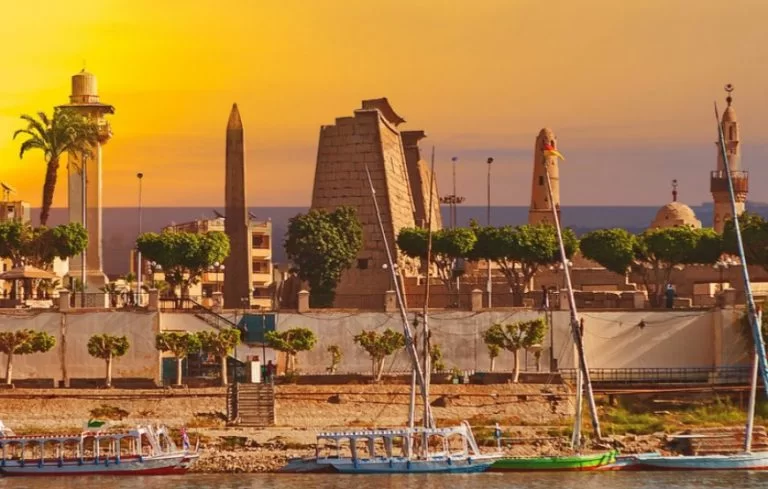
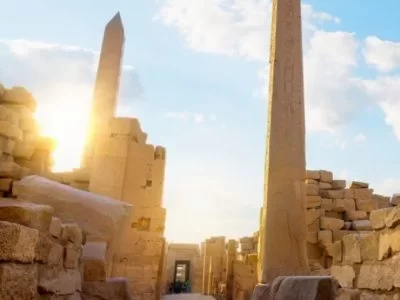
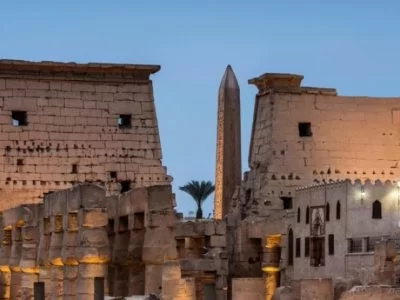
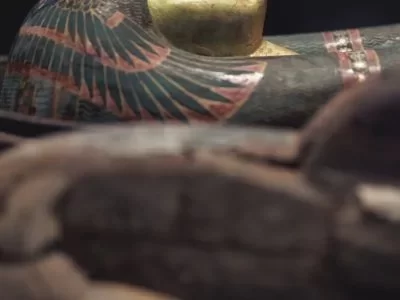
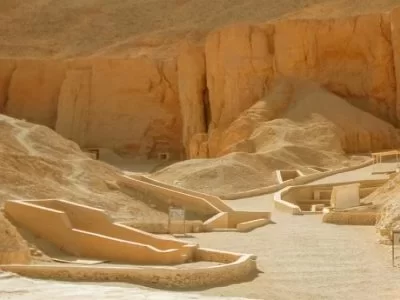
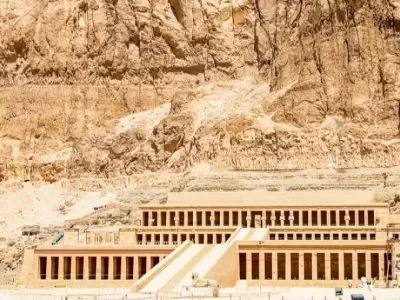
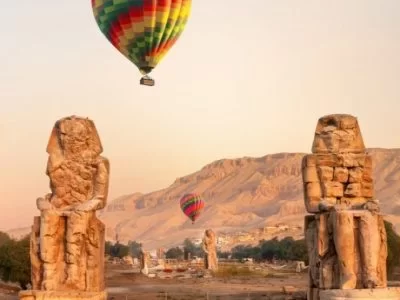
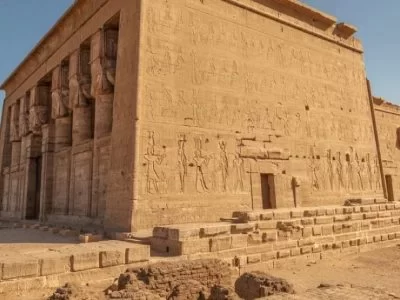
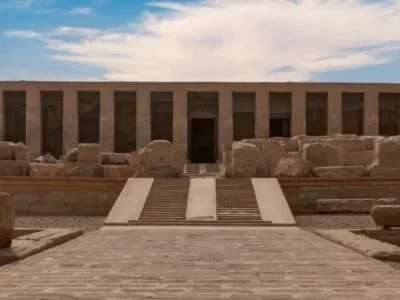
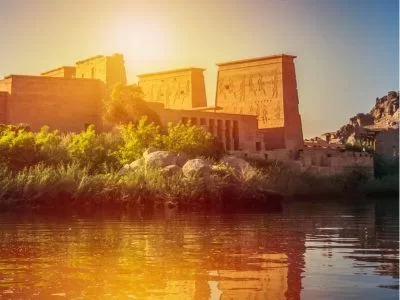
Comment (0)